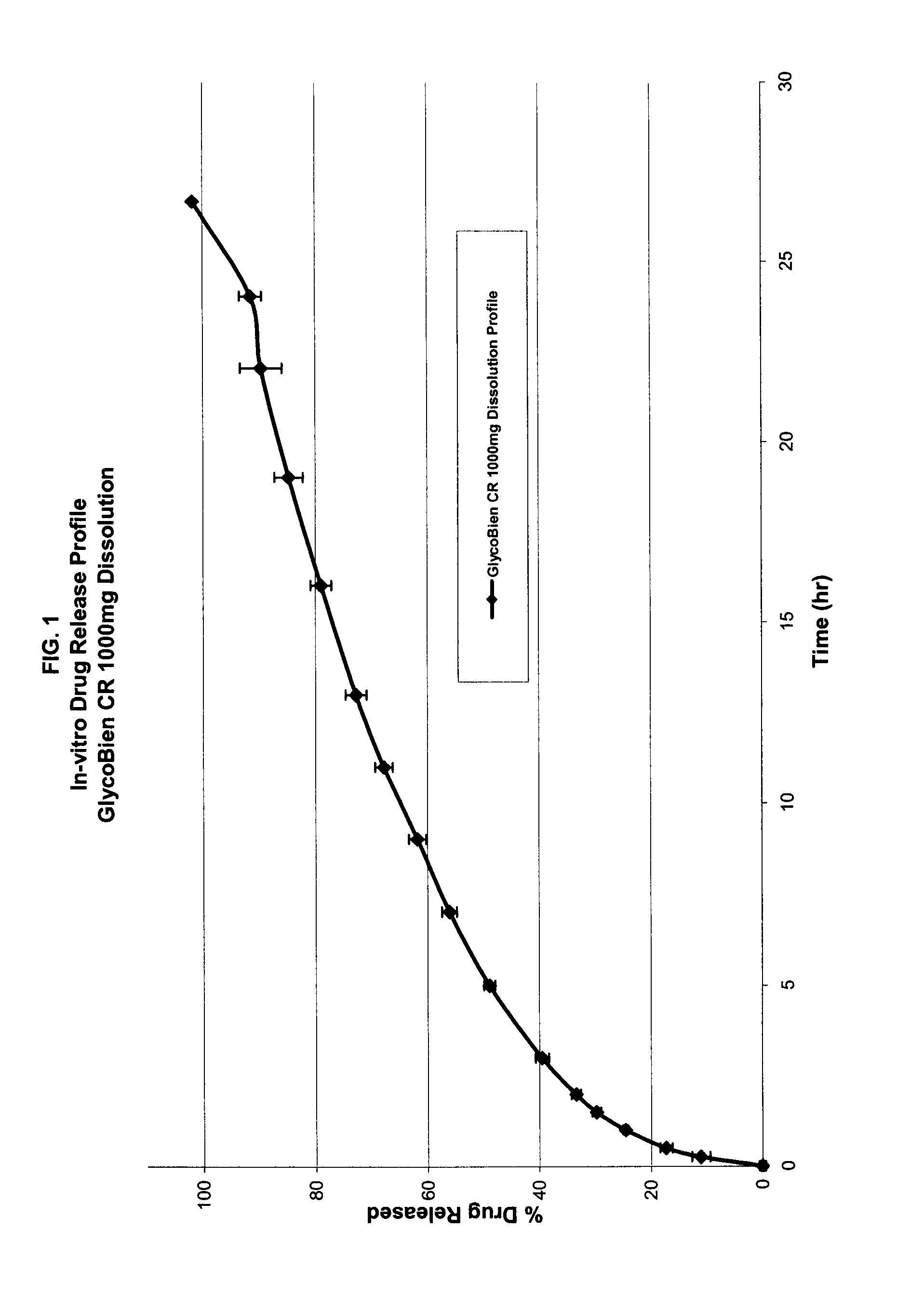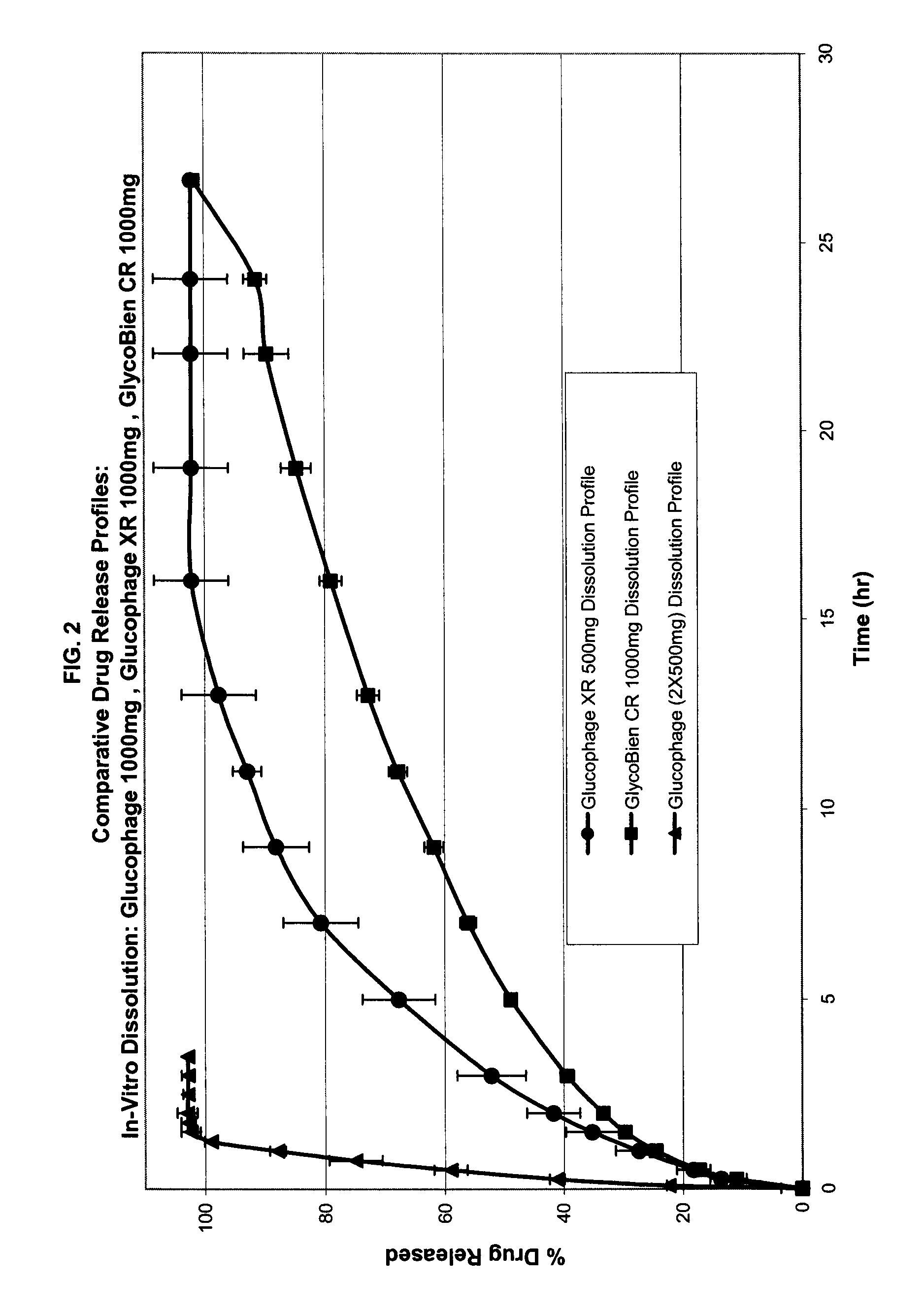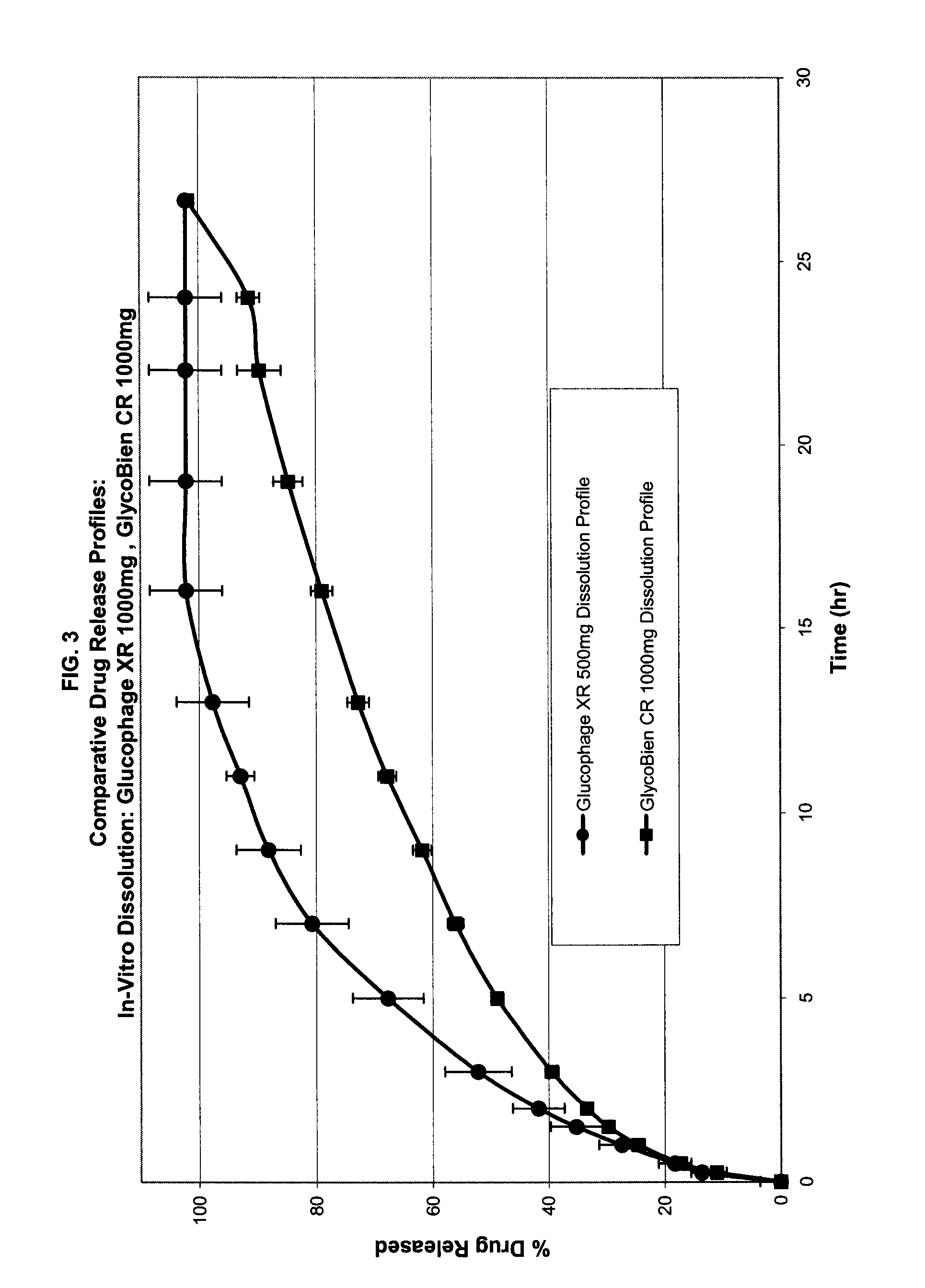Method of treating dysglycemia and glucose excursions
a dysglycemia and glucose-excursion technology, applied in the field of treating dysglycemia and glucose-excursion, can solve the problems of increasing the risk of macrovascular disease, fpg determinations that do not provide information about the contribution of postprandial glucose-level rise to overall glycemic control, and achieve superior blood glucose control, reduce postprandial glucose excursions, and reduce the effect of postprandial glucose excursions
- Summary
- Abstract
- Description
- Claims
- Application Information
AI Technical Summary
Benefits of technology
Problems solved by technology
Method used
Image
Examples
examples
[0287]Composition of Rapid-Absorption Modified Release Metformin Oral Dosage Form
[0288]A rapid-absorption modified release metformin composition of the present invention was prepared according to the formulation:
Composition of Rapid-Absorption Modified Release Metformin: GlycoBien® CR
example-1
GlycoBien® CR 1000 mg
[0289]
AMOUNT PER UNIT DOSEINGREDIENTGRADE(MG / TAB)Metformin HydrochlorideUSP1000.00Cetyl AlcoholNF149.99Gantrez ® MS955House6.81Sodium Lauryl SulphateUSP175.96Hypromellose PhthalateNF40.06FD & C Yellow #5House1.47
example-2
GlycoBien® CR 500 mg
[0290]
AMOUNT PER UNIT DOSEINGREDIENTGRADE(MG / TAB)Metformin HydrochlorideUSP500.00Cetyl AlcoholNF74.99Gantrez ® MS955House6.81Sodium Lauryl SulphateUSP87.98Hypromellose PhthalateNF20.03FD & C Yellow #5House0.74
PUM
| Property | Measurement | Unit |
|---|---|---|
| pH | aaaaa | aaaaa |
| pH | aaaaa | aaaaa |
| concentration | aaaaa | aaaaa |
Abstract
Description
Claims
Application Information
 Login to View More
Login to View More - R&D
- Intellectual Property
- Life Sciences
- Materials
- Tech Scout
- Unparalleled Data Quality
- Higher Quality Content
- 60% Fewer Hallucinations
Browse by: Latest US Patents, China's latest patents, Technical Efficacy Thesaurus, Application Domain, Technology Topic, Popular Technical Reports.
© 2025 PatSnap. All rights reserved.Legal|Privacy policy|Modern Slavery Act Transparency Statement|Sitemap|About US| Contact US: help@patsnap.com



